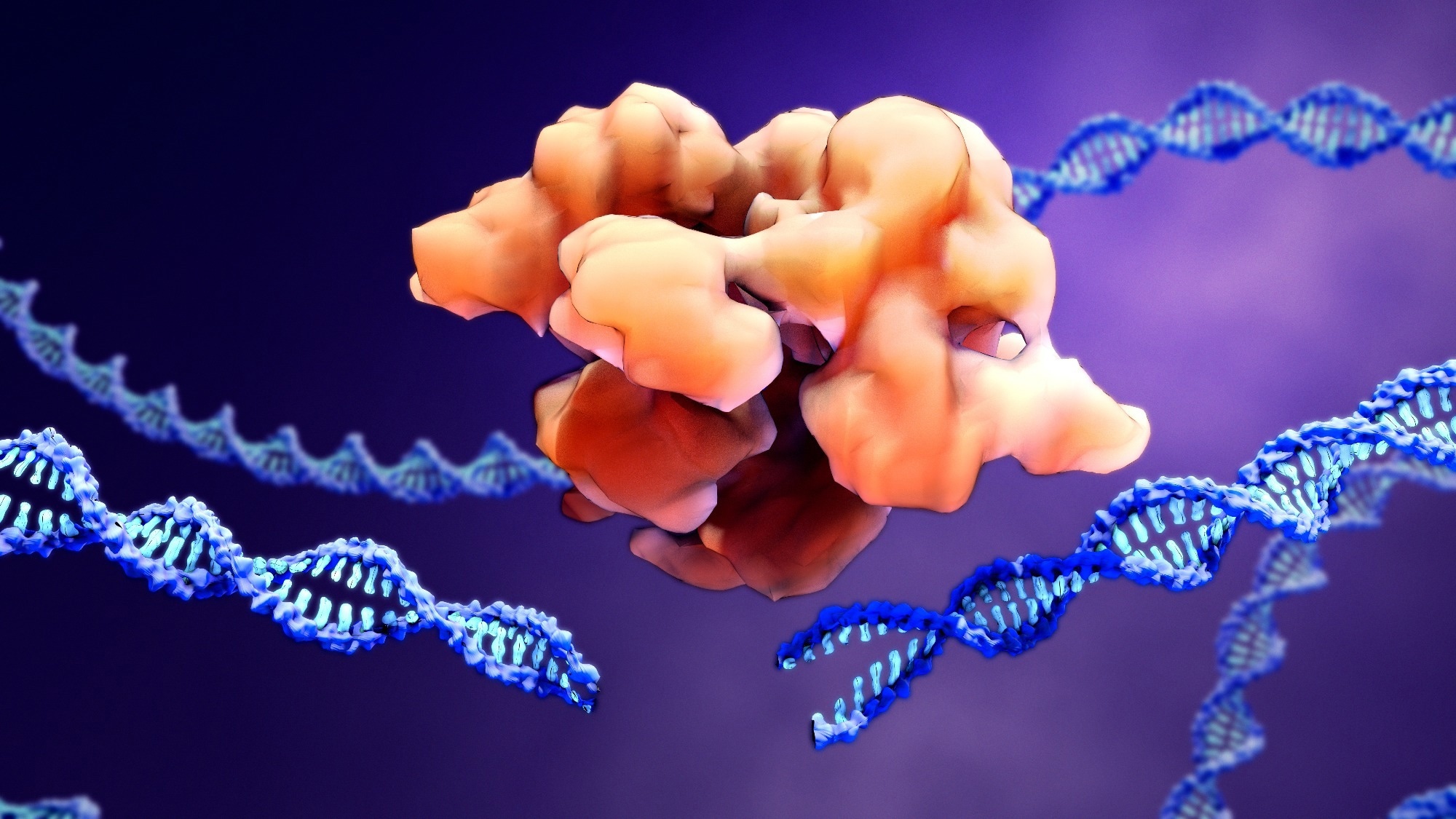Reviewed by Danielle Ellis, B.Sc.Oct 30 2023
Severe Combined Immunodeficiencies (SCIDs) encompass a collection of serious primary immunodeficiency disorders primarily instigated by genetic mutations that disrupt the development of T-cells. SCID can also impair the function and quantity of B-cells and natural killer cells.

Image Credit: Design_Cells/Shutterstock.com
Without treatment, SCID leads to fatality within the first year of life. Traditional therapy for SCID patients relies on allogeneic hematopoietic stem cell transplantation (HSCT). Nevertheless, this approach encounters considerable challenges in finding compatible donors and potential complications like graft-versus-host disease (GVHD).
A pioneering solution has arisen with the introduction of genome editing (GE), particularly utilizing CRISPR-Cas9 technology. This state-of-the-art gene therapy research holds promise for various genetic disorders, including SCID.
The CRISPR-Cas9 system creates precise double-strand breaks in DNA, facilitating accurate gene editing. The repair process can either disrupt a specific gene or rectify it, potentially targeting nearly any gene in the genome. This advancement broadens the scope for therapeutic interventions in numerous genomic diseases.
One encouraging genome-editing technique, CRISPR-Cas9 Homology-directed repair (HDR)-mediated GE, offers the potential for precise gene insertion. In some SCID subtypes, an alternative to HSCT may involve traditional CRISPR-Cas9 HDR-mediated gene insertion, but it comes with inherent risks, especially in cases like RAG2-SCID.
RAG2 is a nuclease crucial for DNA cleavage during lymphocyte development, and CRISPR-Cas9 HDR-mediated gene insertion might trigger uncontrolled RAG2 nuclease activity and detrimental structural variations.
In response, researchers at Bar-Ilan University in Israel propose an innovative replacement strategy called GE x HDR 2.0: Find and Replace.
This method, detailed in a paper published in Nature Communications, combines CRISPR-Cas9-mediated genome editing with recombinant adeno-associated serotype 6 (rAAV6) DNA donor vectors to accurately replace the RAG2 coding sequence while preserving regulatory elements.
This approach can also be applied to other genes that have hot spot regions susceptible to disease-causing mutations.
Our innovation hinges on a crucial insight: to efficiently trigger CRISPR-Cas9 HDR-mediated GE for precise coding sequence replacement, it's essential to separate the distal homology arm from the cleavage site and align it with the sequence immediately downstream of the segment needing replacement.”
Dr Ayal Hendel, Goodman Faculty of Life Sciences, Bar-Ilan University
Hendel added, “In this process, elongating the distal homology arm length in the donor is of paramount importance. By preserving endogenous regulatory elements and intronic sequences, our approach faithfully reproduces natural gene expression levels, thus reducing the associated risks of unregulated gene expression.”
“This groundbreaking technique, which involves replacing entire coding sequences or exons while retaining critical regulatory elements, brings hope to patients with RAG2-SCID and holds promise for the treatment of various other genetic disorders,” continued Hendel.
Source:
Journal reference:
Allen, D., et al. (2023) CRISPR-Cas9 engineering of the RAG2 locus via complete coding sequence replacement for therapeutic applications. Nature Communications. doi.org/10.1038/s41467-023-42036-5.